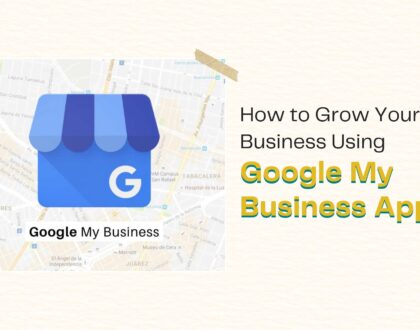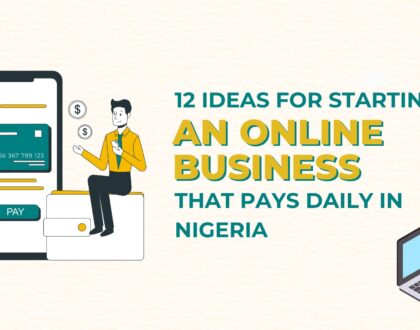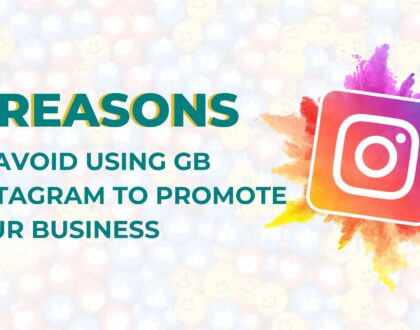Steps to Writing a Winning Business Pitch for Investors

Picture this: You’re standing in a room filled with potential investors, the individuals holding the keys to your entrepreneurial dream.
You only have a single opportunity to convince them that your business proposal is valuable enough to invest their time and finances.
You probably have just enough time to craft a business pitch that’s good to convince these investors to walk the path to profits with you. How do you go about crafting a winning pitch?
This guide will be your trusted companion on how to go about this, transforming the daunting task of raising funds for your business into an engaging process!

With each step, we’ll unravel the art behind effective pitching, allowing you to captivate your audience, convey your passion, and convince them of your idea’s potential.
This guide will help you create an investor-ready pitch that goes beyond a boring slideshow and presents your business vision captivatingly. Whether you’re a first-time entrepreneur or a seasoned business owner looking to refine your pitch skills, you can create a pitch that makes investors sit up and say, “Tell me more!”
Ready to work? Here’s a comprehensive guide to help you craft an effective business pitch.
Step 1: Understand your Investors
To effectively present your idea, it is crucial to conduct research and pinpoint the appropriate investors to approach. This lets you gather important information about:
- Who your investors are
- What their investment preferences and interests are
- What they are currently investing in, and
- What they have previously invested into
By doing this, you could tailor your pitch to your investors’ preferences and align your value proposition with their investment goals for a better chance of success.
Step 2: Define your Value Proposition
It is crucial to effectively communicate the unique qualities of your business or product that sets you apart from competitors (if any). Here’s a guide on how to discover your business’ value proposition.
This entails pinpointing the particular issue your product or service addresses, specifying your intended audience, and emphasising its advantages.
Don’t forget to highlight the potential for expansion, your business’s competitive edge and how profitable the business will be in a specified period (usually within 3 to 5 years).
If you’re unsure how to craft a compelling value proposition, Hubspot did a great job breaking it down for you here.

Step 3: Craft a Captivating Elevator Pitch
An elevator pitch is a 1-2 minute briefing that captures the value of your business and why investors should invest in it.
Essentially, you want to develop a concise and engaging summary of your business that can be delivered within a minute or two.
Focus on capturing attention, generating curiosity, and conveying the essence of your venture. Make it memorable and highlight the most exciting aspects of your business. Here’s a really cool guide on how to craft a winning elevator pitch (with samples).
Step 4: Present a Compelling Problem Statement
Every business or product is out to solve a problem or make an existing solution better. Clearly describe the problem or pain point your target market is experiencing and creatively address how your business solves this problem.
It is essential to explain the significance and scope of this issue to create a sense of urgency and demonstrate the demand for a solution.
Step 5: Showcase Your Solution
When promoting your product or service, emphasise how it can solve the specific problem that your target audience is experiencing.
Linking to the problem statement, explain how it addresses their pain points.
Highlight its unique features, benefits, and advantages over existing solutions. Use tangible examples, demonstrations, or visuals to make it more compelling.
Step 6: Demonstrate Market Potential
If there’s a market for it, investors would love it!
Provide market research, data, and analysis that shows people are willing and ready to buy your product or service and will buy for a very long time. This is the potential for growth and profitability.
The best way to present market potential is by defining the market size (it has to be a sizeable or very large market), its growth rate (how fast customers want the product), and any relevant trends or projections.
Lastly, identify your target customers and demonstrate a deep understanding of their needs and behaviours. We love this in-depth analysis by Similar Web on how to calculate your market potential! Highly recommend you read it.
Step 6: Highlight your Business Model
Explain the methods or strategies your business would employ to generate revenue and achieve profitability.
Describe your pricing strategy, distribution channels, and customer acquisition plan. You can also showcase any existing partnerships or traction you have gained to instil confidence in your ability to execute your business model effectively.
If you’re unsure of what business model to adopt for your business, here’s an Investopedia article that helps you make a pick fast.
Step 7: Present your Team
One important aspect to address is introducing the members of your core team and their relevant expertise.
Create a section on your pitch deck to highlight your team’s qualifications, track record, and how their skills align with the needs of the business. Keep this section super short, using bullet points if necessary.
Investors generally want to know who is running a business and how trustworthy they are before entrusting their money.
Step 8: Provide a Clear Financial Projection
Financial projections show your business costs and estimated revenue for the future. We’re talking about a 1 to 5 years projection of how much your business will spend and what the revenues would look like.
Generally, this is optional, You don’t have to include projections in a pitch. But if you do, endeavour to provide an overview, including your revenue, expenses, and profitability estimates.
Furthermore, provide details regarding your financial requirements and explain how the investment will facilitate the attainment of substantial growth benchmarks.
Be as transparent as possible about potential risks and how to mitigate them. This Foresight article breaks down the process of making an accurate financial projection for your pitch.
Step 9: Craft a Powerful Conclusion
Want to keep your potential investors hooked on you? Summarise your pitch’s main points and close with a powerful call to action.
Re-emphasise the value you offer, highlight the potential returns they can receive and encourage them to join your opportunity before they miss the moving train.
Step 10: Refine and Practice Your Pitch
Before going out there to throw yourself into the light, practice, practice and refine your pitch as much as you can.
It has to be perfect because you might not get another shot at the investor(s).
Refining and revising your pitch for clarity, brevity, and impact makes you confident to deliver efficiently. Use visual aids or slides to enhance the overall presentation.
Wrapping Up . . .
We get it. It’s never easy it looking for and bagging investors in any entrepreneurial journey. This is why learning to do this effectively can make or mare your chances and business.
This is also one of the reasons we’re building a business education and mentor-matching platform to provide entrepreneurs like you the resources you need to go all the way.
Now failure might come. It’s almost inevitable. Most people would say ‘No’ to you. But that’s ok. Smart entrepreneurs ask for feedback from their rejections and use this to refine their pitch over and over until they get it right.
We know this because our funding platform is centred around making your fundraising process faster. It takes one ‘Yes’ to turn your business around. Go out there and nail it! Good luck.
Recommended Posts

How to Grow Your Local Business Using Google My Business App
January 20, 2025

12 Ideas For Starting An Online Business That Pays Daily In Nigeria
October 31, 2024

5 Reasons To Avoid Using GB Instagram To Promote Your Business
October 17, 2024

